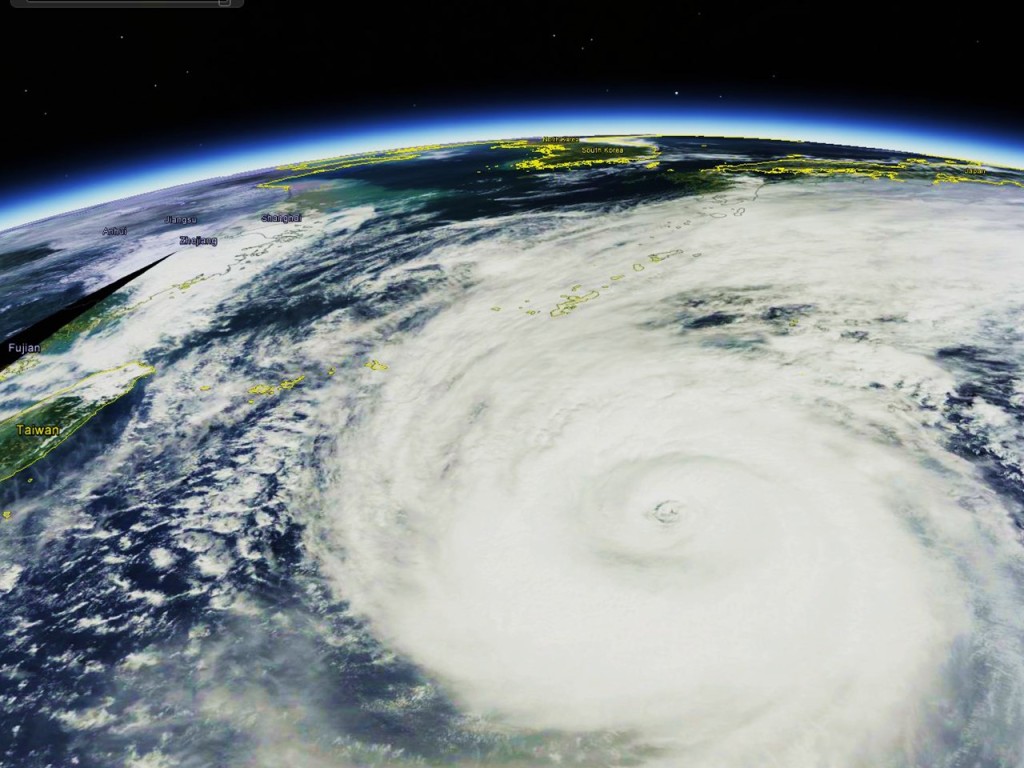Here’s the NASA MODIS image of 140 mph Typhoon Vongfong from several hours ago, which I have displayed in Google Earth, as it approaches Okinawa (click for full size version):

Typhoon Vongfong, at 140 mph intensity, as seen by the NASA MODIS instrument midday October 10, 2014
As seen in the latest forecast track, Vongfong is expected to make a direct hit on Okinawa, then progress up through the main islands of southern Japan.

 Home/Blog
Home/Blog



